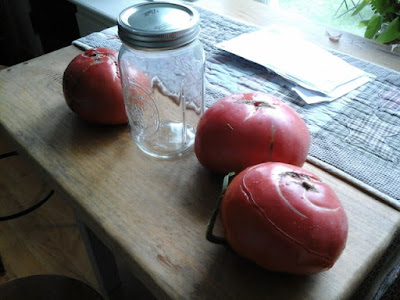 |
| Chickens are better to look at than beans. We are letting them scratch this up to dirt, to get a head start on new garden space for next year... |
From my two rows of pinto bean plants, I harvested 5 pounds of dried, shelled beans. Thats not a huge harvest, but it was in unimproved soil, with no irrigation amd very limited weeding.
Was it worth the garden space to grow something that is so cheap to buy in the store? Here, pinto beans go for around maybe $2.00 a pound at the grocery store. That means I got about $10 return on maybe 50 cents of seed. But of course its not just about the cost. So, here is a list of pros and cons for growing our own dried beans.
Pros:
All legumes, such as beans, help fix nitrogen in the soil, making it available for whatever I plant in that spot next year.
They are extremely low maintenance. I never even watered these plants except when I actually put the seeds in the ground.
There is only one harvest, and then the plant is done.
They are easy to save seeds from, for next year's planting.
The harvest will give us about 20 meals worth of pinto beans.
Shelling beans is a nice relaxing activity, something to do while you watch TV.
Free bunny food. The bunnies like to eat the bean vines after harvest.
Dry beans are the easiest of all foods to store.
Cons:
Beans are cheap to buy. So why bother planting?
The row space could have been used to plant another crop, like more peppers or winter squash. These crops are considerably more expensive if i have to buy them.
There is only one harvest. Yes, this can be looked at as either a positive (only have to pick once) or a negative (only one crop for the whole season)
Shelling beans takes time.
Well, as you can see, my list of positives is slightly longer than my list of negatives. I think it comes down to space. If garden space were really limited, I would vote against planting them, even though we like pinto beans and eat lots of them. But, if there is room, I still think it is worth it to plant them. And with better, improved soil next year, they should produce even more.
Since I plan to expand the growing area next year, the bean planting area will actually expand.
Refried beans, anyone?






















































